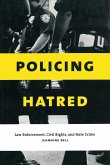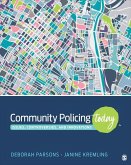Using data from 42 sizable American cities on their environments and police organizational structures, the book documents the importance of organizational structure on police action by predicting arrest rates for 2 types of serious criminal offenses. It applies this research perspective to neighborhoods in analyses of policing styles in three cities: Elyria, Ohio; Columbia, S.C.; and Newark, N.J. The study examines the kinds of data on police action available from a police dispatch log, as well as particular information recording processes used in the three sites. Two key indicators of police style are the rate of police aggressiveness and the degree to which local police work is legalistic, watchmanlike, or service-oriented. These measures are used to analyze variations in policing styles across both neighborhoods and cities, providing support to the theory that organization rather than environment determines local policing styles. This view receives additional support from indepth analyses of social, demographic, and economic characteristics of the three sites. Tables, references, and index.
Hinweis: Dieser Artikel kann nur an eine deutsche Lieferadresse ausgeliefert werden.
Hinweis: Dieser Artikel kann nur an eine deutsche Lieferadresse ausgeliefert werden.








